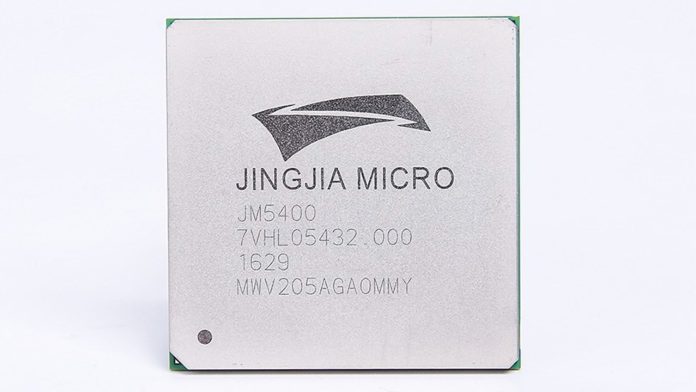JINGJIA MICRO

Chinese GPU maker Jingia Micro is developing a new GPU that comes close to rivaling the NVIDIA GTX 1080
The JM9271 offers fast clocks, PCIe 4.0, HBM memory, and a 200W TDP. Jingjia's focus seems to be on the specialized military applications market at the moment, but support for DirectX 12 and Vulkan APIs could make it potentially suitable for gaming.
Chinese GPU maker Changsha Jingjia Microelectronics is reportedly developing an in-house graphics card which is touted to offer performance equivalent to that of an NVIDIA GeForce GTX 1080. The JM9271 is an OpenGL 4.5-compatible card which offers some impressive specs on paper.
First reported by CNBeta, information regarding Jingjia Micro's GPU development pipeline was presented in the company's H1 2019 financial results. Currently, Jingjia Micro has received orders for production of the 28nm JM7200 GPU. The JM7200 has a low power consumption of just 10W but offers performance comparable to an NVIDIA GT 640 (50W). The predecessor, the 65nm JM5400, was considered robust enough for use in military aircraft displays.
Buoyed by the success of the previous iterations, Jingjia Micro is developing a successor to the JM7 series. Called the JM9 series, the company says that the new GPUs are in an engineering development stage having completed the feasibility and program demonstrations. Front end design and software design are reportedly underway. There are two GPUs in the pipeline - JM9231 and JM9271.
JM9231 has clock rates above 1,500 MHz, 8 GB GDDR5, 256 GB / s memory bandwidth, 2 TFLOPs of FP32 performance, and a TDP of 150W. On paper, the JM9231 can provide a tough competition for the NVIDIA GeForce GTX 1050. Up the ladder, we have the JM9271 flagship that looks to be a very powerful card.
The JM9271 offers clock rates above 1,800 MHz, supports PCIe 4.0, sports 16 GB HBM VRAM with 512 GB / s bandwidth, 8 TFLOPs of FP32 performance, and a TDP of 200W. With these specs, the card is expected to offer performance equivalent to a GTX 1080.
Apart from the specs, nothing much is known about the cards themselves so we'd advise against getting any hopes up. The cards only support OpenGL and do not list support for DirectX 12 or Vulkan APIs so it could be that their application restricted to special niches. We do not know if support for these APIs would be added sometime later, but that seems somewhat unlikely given that early engineering samples have already been reportedly demoed.
Of course, it will take a lot of work before Jingjia Micro can compete against NVIDIA and AMD (or even Intel), but there seems to be good potential for home-grown tech in the Chinese market. Recently, we saw another Chinese company, Zhaoxin Semiconductor, introduce the Windows-compatible octa-core KX-6000 CPU whose performance can potentially rival an Intel Core i5-7400. Right pricing might eventually see Chinese companies steal a significant market share from established semiconductor players.
by Vaidyanathan Subramaniam

No comments:
Post a Comment